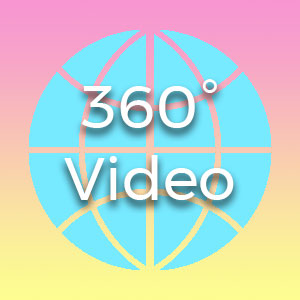Generally, virtual reality developers were the only users able to produce 360° videos, but now, video creators of all kinds can take advantage of this technology on YouTube and Facebook to increase user engagement. Publishing a 360° video as opposed to a traditional fixed-frame video, allows viewers to be a part of the story and fully immersed in the video experience. If you are looking to boost your video interaction, this innovative medium for storytelling can be a valuable tool to add to your collection. To help you start creating and sharing 360° videos, check out these helpful tips.
How to Find the Proper 360° Video Equipment
Before filming in 360°, research all of your options and decide which platform you are uploading to. You can choose to purchase a singular camera, or create your own apparatus with multiple cameras to catch every angle. If you choose to use a singular camera to capture video in all 360° many of the standard cameras will work fine, however, be aware that YouTube only allows uploads from certain devices that do so. For singular cameras that are suitable for YouTube research the Ricoh Theta, Kodak SP360, Giroptic 360cam, and IC Real Tech Allie. Creators that opt into creating their own customizable setup typically use multiple GoPros, often between 6 and 16 GoPros. The more cameras attached to the rig, the more angles and footage you’ll be able to capture and work with. Keep in mind that filming in 360° means that everything will be in view, so there are several factors to keep in mind in order to produce quality content, such as lighting, angles, and more. For specific tips on how to improve the quality of your videos, check out our previous blog post.
How to Edit 360° Video Footage
There are several 360° video editing programs to choose from, but one of the most commonly used software is Kolor Autopano Video. Kolor Autopano is YouTube compatible and can be downloaded on Windows and Mac. It allows you to upload all of your footage from each of your cameras and it syncs them together. The resulting product is a seamlessly stitched together 360° video. Kolor Autopano can render videos in 4K, HD, or it can export individual frames. The free demo version only allows you to create videos up to 30 seconds, and all rendered video files are watermarked with the Kolor Autopano logo. This option is suitable for users who are only experimenting with 360° video. For more serious producers, you can purchase the full program here.
How to Upload 360° Video to YouTube and Facebook
Depending on the platform you are uploading to, there are certain requirements your video must meet. In order to upload to YouTube, download their free 360° Video Metadata app and follow the instructions to make sure that your video meets their specification requirements. You can also add the metadata to your video manually using Python script. You do not need a separate app to upload 360° videos to Facebook, but you should review Facebook’s 360° video specs that your video must meet in order for it to be encoded and uploaded properly.
360° videos entice viewers in a way that fixed frame videos do not, encouraging users to click and share content more often. Stepping into the world of 360° video can make a huge difference in viewer engagement for brands and artists trying to market themselves. Why not test it out and watch your audience grow?
